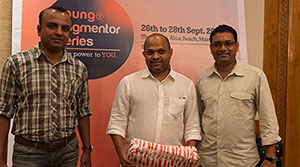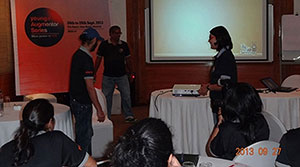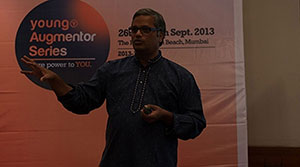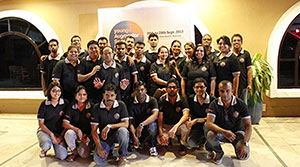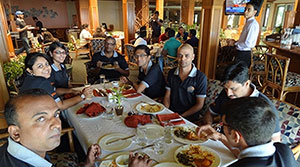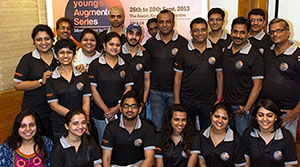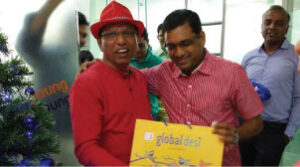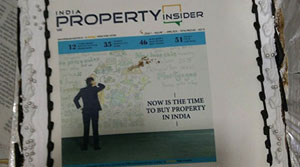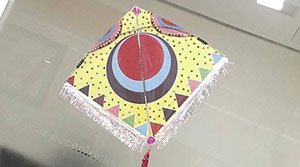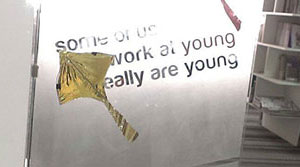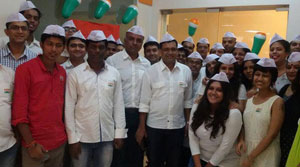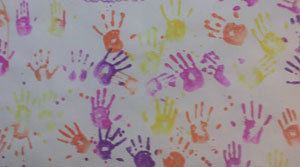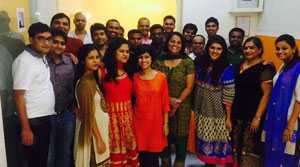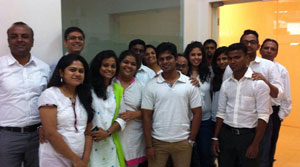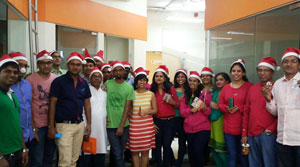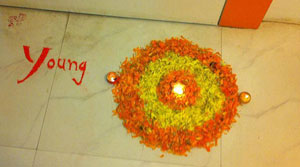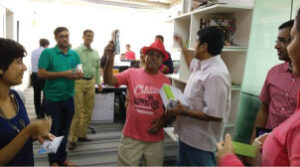YOUNG believes in creating a culture that enhances creativity and innovation, creates delightful customer experiences and drives business growthÂ?.
By making collaborative generosity the norm, YOUNG – to unleash its creativity.
By making collaborative generosity the norm, YOUNG – to unleash its creativity.
True to any start-up, the first couple of years went into setting up infrastructure, people, technology etc. Not that any of these will cease to see any future upgrades, as change is the only constant. More importantly, with so many knowledge workers putting their heart and soul in the creative process, the time is ripe to create a culture at YOUNG.
The sole objective of creating this culture: “Enhance Creativity and Innovation, Create Delightful Customer Experiences and Drive Business Growth” giving a boost to employee morale and job satisfaction.
To take a straight dive, few things leaders and colleagues at YOUNG should acclimatize to:
- Encourage a helping behavior
- Beyond simple workload sharing, collaborative help comes to the fore – Lending perspective, experience and expertise that improve the quality and execution of ideas
- Helpfulness will be actively nurtured in the organization. The trickiness of this management challenge is to increase a discretionary behavior that must be inspired, not forced
- We believe our organization is full of knowledge workers working on complex problems. It too needs to boost the productive creativity. It will produce better outcomes for customers and provide a more attractive working environment for talent to be engaged in effective mutual help.
There are four keys to achieve these goals- beginning with a challenge to the people at the top of the organization.
1. Leadership Conviction
Our leadership should explicitly be focused on helpfulness. It’s not only because the problems we solve require extreme creativity, it’s also because clients are more complicated. We must believe that the more complex the problem, the more help we need. And that’s the kind of stuff we’re getting asked to tackle, so we need to figure out how to have a culture where help is much, much more embedded. Essentially this is a conviction that many minds make bright work.
2. The Two Sides of the Helping Coin
There are going to be two sides for every helping encounter and both must be encouraged and supported. People initially might hesitate to extend such an invitation. Because most cultures have norms of reciprocity, getting help from others can put you in their debt. Even if you are unfazed by the prospect of a future request, you might worry about seeming weak or incompetent if you ask for assistance, especially from someone of higher status. The culture or openness or helpfulness makes a conscious effort to sweep that hesitation away. From the beginning of every project the team/planners/designers should be encouraged to assume that they’ll need help. A project team with a demanding client learns that it would be irresponsible not to ask a colleague who had a lot of experience with that client to review its work.
At YOUNG – There is no shame in asking for help.
People will cheerfully accept an all office email blast. In most cases, however asking everyone for help isn’t particularly effective. The help seeker must figure out whom to approach.
Mainly there are three characteristics: a) Competence (how well the person did his or her job). b) Trust (how comfortable the respondent is sharing thoughts & feelings with the other person) c) Accessibility (how easily the respondent could obtain help from the person). Everyone has their own area of accessibility. So in most cases trust and accessibility will matter much more than competency.
One has to be trustworthy to get to the top of someone’s helper list. We are sure as groups we will work much more effectively when members feel safe discussing mistakes and problems relating to cracking an idea or innovation or simple hooks or positioning lines. More importantly “there’s trust in the room that the intention of the person popping in is to help the project.”
Accessibility involves being available, willing and able to lend a hand.
3. Processes And Roles
It would be hard, we think, to achieve this simply by communicating the devised culture.
When help is not seen as an integral part of the process, teams rush through their project and get quite close to the end before they realize “Wow, we completely missed something- which we wouldn’t have missed if we had stopped and asked for help”.
We have to build the “value of help into a formal process and explicit roles”. HELP has to be embodied in the entire creative/design process.
- Capturing the brief from the client.
- Creating a sharp brief
- Structured email blasts if required
- Create structured brain storming sessions.
- Brief to the creative team
- Teams seeking feedback on mapping ideas
- Formal internal design reviews
- Create “Design Community Leaders” (DLCs)
- Informal meetings between Project teams & DLCs
- Community meetings
- Focus groups management for research useful enhanced creativity
- Creating an eco-system with industry leaders/ external experts or specialist.
- Review client presentations internally
- Most Importantly “ Help those outside your own team”
Each of the above will need expansion through well-defined processes that will act as benchmarks to achieve better creativity, efficiency and drive business growth.
4. Slack in the organization
Part of the case for building a help-friendly organization is that it produces greater efficiency. It may seem paradoxical, then, that one of the keys to collaborative help at YOUNG is allowing slack in the organization. A certain
amount of give in employees’ schedules pays off because; the accessibility of potential helpers is very important. It allows people to engage with one another’s work in unplanned ways.
Also we have to remember, helping is a discretionary behavior. A potential helper may or may not be able or be willing to respond to any given request hence we have deliberately not overloaded colleagues with tasks of your own. Notice the implication: Time that might be spent on billable client work is made available to facilitate ad hoc assistance. This strongly reinforces messages exhorting people to help their colleagues.
It’s an expensive commitment, given the opportunity cost, but it makes sense in light of the nature of creative/design work, with its complex, open-ended projects, and the role serendipity plays in it. “In the creative process, help is something you often don’t know you need until it’s there in front of you”. Over a period of time help should occur organically, as part of everyday life in the organization.
The Surprising Omission
Collaborative help may seem uncontroversial; it requires effective and appropriate mix of help. The helper or receiver has to be selective and be sure of the precise nature of help. It should not be mere delegation of assignments.
Also one cannot rely on fancy collaborative software tools or other technologies. Most pointedly financial incentives don’t play a prominent role in promoting the culture of help.
Our recruitment process should also eliminate the “I “, “me” and “myself” kind of candidates. During job interviews/day to day working, when people repeatedly say “I” not “we”, when recounting their accomplishments, one must get suspicious. But if they’re generous with giving credit and talk about how someone else was instrumental in their progress, we know they will give help as well as receive it.
Helpfulness will be considered in promotions as well. It is a value that everyone in a senior position is expected to model. But on a daily basis, the incentive to help comes from the simple gratitude it produces and the recognition of its worth.
We would recommend everyone to read a book on prosocial behavior, Give and Take, Adam Grant describes reserved a spot for people to post “Love messages” to those who had helped them. The helpers found this deeply rewarding.
We suspect the explicit incentives in the form of, say; bigger bonuses for the most helpful people might well give rise to competitive helping – rather than the oxymoron.
Rewards will be based on the assumption that people begin with prosocial motivations and are happy when their helping is recognized.
Our simple message is that the thing to beat is the best work you could have done without help- and that when the firm produces the best work possible for clients, all its employees do better. Subsequently, it enables business growth.
Great Ideas need a great environment: Young work culture
Young invests continually in maintaining a work environment that’s OPEN
• Optimistic
We understand that the greatest of ideas are fragile and therefore, require an optimistic approach from the organization to aid it’s development.
• Pragmatic
We ensure the enthusiasm and efforts generated through each work day get filtered through ground checks for relevancy to set goals.
• Enterprising
We encourage employees to think beyond roles, conventions and boundaries.
• Neutral
We make conscious efforts to keep influences and factors that adversely affect productivity and morale, to a minimum.

